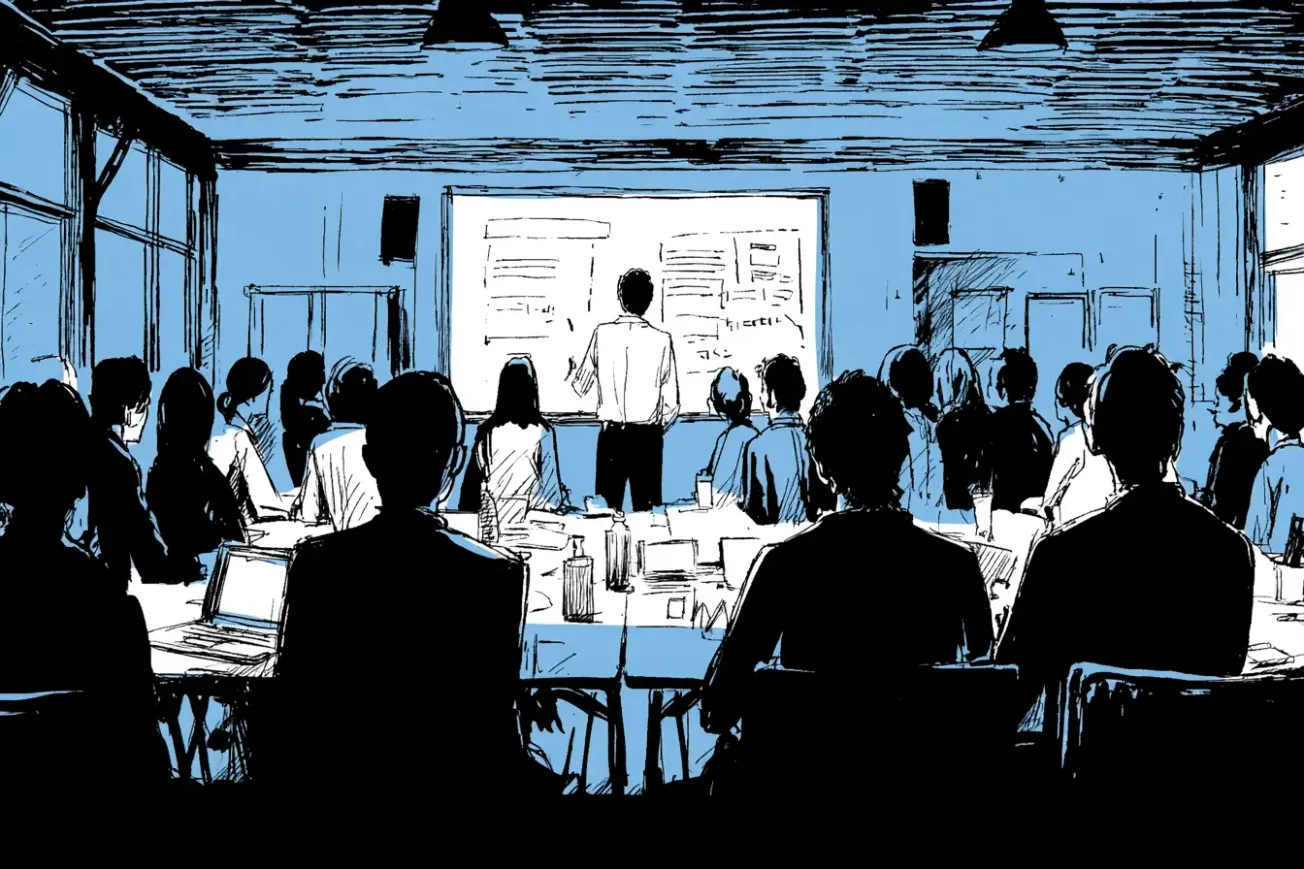The Line #2
“They’re going to cut your hours in half—so make every one of them count.”
— Scott, mentor, partner, and battle-tested consultant
Every experienced change practitioner has their version of Scott—a mentor who’s seen the sausage made and lived to tell the tale. Mine built a spreadsheet. Not just any spreadsheet, but a scarred, meticulous, field-tempered tool that could scope, size, and translate change strategy into labor hours, task by task, deliverable by deliverable.
He called it the Bottoms-Up Labor Estimator, and it changed the way I understood the economics of change work forever.
Why Scoping Change Work Is So Hard
Change management rarely gets scoped properly in the initial proposal. It’s treated like frosting on the cake—nice if you can afford it, dispensable if budgets tighten. But those of us who do this work know better: change isn’t frosting, it’s the baking powder. Without it, nothing rises.
And yet, the moment you put real numbers to the labor it takes to drive adoption and behavior change—workshops, stakeholder engagement, communications, readiness tracking, feedback loops—the pushback begins:
- “Can’t you do it in half the time?”
- “We’ll take the deliverables, but we don’t need the engagement.”
- “The project manager will cover that part.”
What Scott taught me, and what I pass on to you, is this: scope it fully anyway.
Then, if (when) the client balks, you’ll have a reasoned, value-driven plan for how to right-size the effort without compromising outcomes.
What to Consider When Scoping a Change Project
At the highest level, here’s what should go into your initial bottoms-up estimate—even before you get into a tool or worksheet:
A. Project Type and Complexity
- Is this a tech implementation, a culture shift, an org redesign?
- How many stakeholder groups are impacted?
- Is the change mandated, voluntary, or somewhere in between?
B. Timeline and Phases
- What’s the duration of each phase (design, build, test, deploy)?
- Will change activities need to happen in sprints, in waves, or in parallel with go-live?
C. Change Maturity of the Client
- Have they done this before?
- Do they have a change office or embedded roles?
- Will they expect you to lead, coach, or both?
D. Interventions Needed
Map to your method or model:
- Stakeholder analysis and engagement
- Communication planning and execution
- Training coordination or development
- Readiness assessment and tracking
- Leadership alignment and sponsorship
- Resistance management
- Reinforcement planning
Each one of these has tasks. Each task has hours. Each hour requires a resource—internal or external.
The Art of Adjusting for Reality
Once your estimate is built, prepare for the conversation no one wants to have:
“We love the plan, but we can only fund half of it.”
This is where your judgment and clarity come in.
Do you:
- Slash everything evenly?
- Cut whole deliverables?
- Compress the timeline?
- Offload some tasks to the client?
Scott’s approach was to prioritize interventions by risk:
If skipping a stakeholder plan will undermine trust, or losing training means no adoption, those stay. Lower-risk deliverables (e.g. a change agent playbook nobody will read) go.
Right-sizing means choosing which levers to pull, not just cutting hours across the board.
Managing the Proposal Conversation
Frame your scope as a value delivery engine, not a menu of tasks.
Instead of: “We’ll do 10 workshops and send 8 newsletters.”
Try: “We’ve scoped the minimum engagement effort needed to ensure this change lands, sticks, and sustains.”
If you’re asked to reduce scope, show the tradeoffs clearly:
- What gets dropped
- What risks that creates
- What the client needs to pick up instead
Sometimes, that transparency builds trust. Sometimes, it saves the project.
When You Win the Work
Congratulations. You got the green light—but now the real work begins.
- Document the assumptions from the proposal. What are you responsible for? What are they?
- Recalibrate continuously. That initial estimate is a living document. Revisit it during phase transitions, milestone reviews, and when scope creeps.
- Deliver with integrity and impact. If you scoped 100 hours and got approved for 50, don’t try to squeeze the 100 into 50. Redesign the effort so 50 hours get the most critical results.
Clients may not pay for all the change work needed. But they will pay attention to how you show up and deliver what matters most.
Final Thought
Scott’s spreadsheet wasn’t just a labor tool—it was a reality check. It showed what it truly takes to support change, not just what fits in a budget. And while no estimate ever survived first contact with procurement, the clarity it gave us? That’s what made smart tradeoffs possible—and success achievable.
Change isn’t fluffy. It’s work.
And it deserves to be scoped like it matters—because it does.
ChangeGuild: Power to the Practitioner™
Frequently Asked Questions
What is a bottoms-up estimate in change management?
A bottoms-up estimate breaks down change work task by task, hour by hour, and resource by resource. It’s the most realistic way to understand what it will take to deliver outcomes—especially when you know the estimate will be challenged or cut.
Why is it important to scope change work at this level of detail?
Because most clients under-resource change. A bottoms-up estimate gives you the clarity to defend your scope, make strategic tradeoffs, and still deliver value—even when budgets get tight.
What should I include in my change estimate?
Start with key interventions like stakeholder engagement, communication, training, readiness, leadership alignment, and reinforcement. For each, map the specific tasks, who will do them, and how long they’ll take. Don’t forget to factor in prep, iteration, and internal coordination time.
How do I handle it when clients cut the estimate in half?
Don’t panic—plan for it. Prioritize interventions by impact and risk. Cut what’s lower-value or redundant. Reassign work to the client team if needed, but make the tradeoffs clear. The article outlines how to right-size with integrity.
Want to Get Better at Scoping the Real Work?
Change work is often underfunded, misunderstood, or scoped as an afterthought. But you know better—and you’re not alone.
ChangeGuild is where practitioners build smarter, sharper practices.
Join us for field-tested insights, templates, and conversations that don’t waste your time—or your hours.
This post is free, and if it supported your work, feel free to support mine. Every bit helps keep the ideas flowing—and the practitioners powered. [Support the Work]





